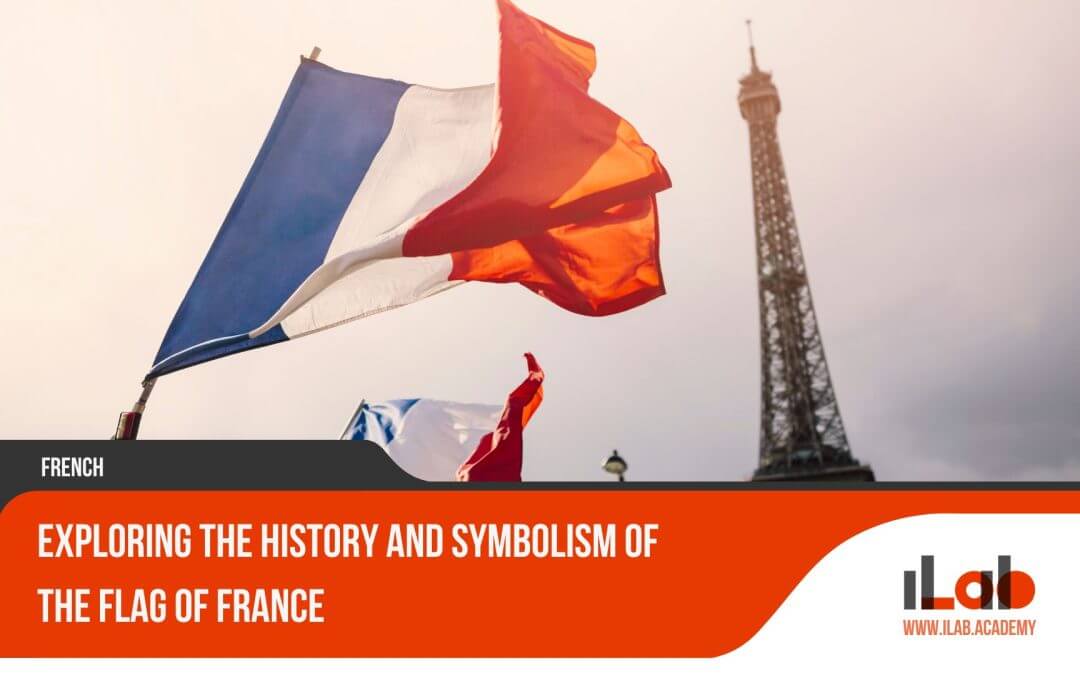Table of contents
French toast, with its golden crust and tender interior, has long been a cornerstone of culinary tradition, offering a fascinating window into the resourcefulness of past generations and the evolution of taste. Tracing its lineage back to ancient civilizations, this dish, known in France as “pain perdu,” served as a pragmatic solution for utilizing day-old bread, thus reflecting a time-honored practice of minimizing waste. As we embark on a historical and cultural expedition, we uncover the transformation of French toast from a simple, economical recipe into a sophisticated and versatile cuisine that graces brunch menus worldwide. This article will guide you through the various incarnations of French toast, examining the subtleties of its preparation and the diverse interpretations that have emerged across different continents. By examining the dish’s journey through time and its adaptation to contemporary palates, we will shed light on the enduring appeal of French toast and its significance as a beloved culinary classic.
Key Takeaways
- French toast, known as ‘pain perdu’ in France, has a rich and surprising history that predates contemporary French cuisine.
- Traditional French toast is made with specific types of bread and custard mixtures, and there is an art to creating the perfect texture and flavor.
- French toast has been adapted and reimagined in various cuisines around the world, incorporating unique ingredients and flavors.
- French toast can be modified to accommodate different dietary needs, such as gluten-free, vegan, or low-sugar variants, without compromising on taste.
Unveiling the Origins of French Toast
The origins of French toast, known as ‘pain perdu’ in France, trace back to ancient times, long before it became a staple of modern culinary tradition. The inception of this dish is rooted in the pragmatic use of stale bread. To avoid waste, cooks throughout history have soaked hard, day-old loaves in a mixture of milk and eggs before frying them to a golden brown. This resourceful method of reviving bread has been documented in various cultures and civilizations, each adding their unique touch to what would eventually become the French toast we know today.
The earliest references to a dish resembling French toast can be found in the Latin recipe collection “Apicius,” compiled in the 4th or 5th century. This compilation includes a recipe called “Aliter Dulcia,” meaning “another sweet dish,” which instructs to soak bread in milk and eggs, then fry and top with honey. Through the Middle Ages, this concept evolved and spread across Europe, with each region adapting the recipe to local tastes and available ingredients.
In France, the term ‘pain perdu’ aptly translates to “lost bread,” referring to the dish’s original purpose of reclaiming otherwise unusable, stale bread. It wasn’t until the dish crossed the Atlantic that it gained the moniker of “French toast,” a name that likely emerged in 17th-century America, as French immigrants brought their culinary traditions to the new world.
The Art of Classic French Toast Preparation
Building on its storied past, mastering the preparation of French toast is key to enjoying this timeless dish in its most classic form. The artistry of French toast lies in its simplicity and the quality of its ingredients. Here are the essential steps to create the quintessential French toast:
Selecting the Bread:
- Brioche or challah are preferred for their rich, tender crumb and ability to soak up the custard without falling apart.
- Day-old bread is ideal as it is slightly dried out and better absorbs the egg mixture, leading to a more flavorful and cohesive texture.
Crafting the Custard:
- Whisk together eggs, whole milk or cream, a touch of sugar, vanilla extract, and a pinch of salt, aiming for a balanced mixture that is neither too sweet nor too bland.
- Cinnamon or nutmeg can be added for a warm, aromatic depth that complements the vanilla.
Cooking to Perfection:
- Soak the bread slices in the custard mixture, allowing enough time for them to absorb the liquid but not so long that they disintegrate.
- Cook on a preheated, buttered skillet over medium heat until golden brown, giving each side an even, crisp exterior while maintaining a soft, custard-like interior.
Ensuring the right bread choice, a well-mixed custard, and careful cooking technique results in a dish that is sumptuously rich yet delicate. This balance of textures and flavors is what makes classic French toast not only a beloved staple but also an art worth perfecting.
Regional Twists on French Toast Around the World
As French toast ventured beyond its European roots, it embraced the myriad flavors and culinary traditions of the world, manifesting in a delightful array of regional variations. This beloved dish has been adopted and adapted by different cultures, incorporating unique ingredients and nuances that reflect local tastes and preferences.
In the United States, French toast is often served with a generous drizzle of maple syrup and a pat of butter, sometimes accompanied by bacon or sausage. The addition of cinnamon and vanilla to the egg batter is a common twist, infusing the dish with warm, aromatic flavors. In contrast, the Southeast Asian “kaya toast” is a variation that sandwiches a spread made from coconut milk, eggs, and sugar between two slices of bread before it is dipped in egg and fried, offering a tropical, custard-like flavor.
In France, where the dish is known as “pain perdu” or “lost bread,” it is traditionally made with day-old brioche and might be sprinkled with powdered sugar or served with fruit compotes or jams. Spaniards enjoy “torrijas,” which are typically soaked in wine or milk, then coated with eggs and fried, often served during the Lent and Easter seasons.
A savory version can be found in the United Kingdom, where “eggy bread” skips the sweet toppings and opts for a sprinkle of salt and pepper, often served alongside tomato ketchup or brown sauce.
These regional twists demonstrate the exceptional versatility of French toast, showing how it has been embraced and reimagined across the globe. Each variation offers a glimpse into the culinary heart of its culture, creating a patchwork of recipes that continue to evolve and inspire.
The Secret to Perfect Consistency and Flavor
Exploring the nuanced palates of regional French toast variations invites an examination of the culinary finesse required to perfect the dish’s consistency and flavor. Achieving the quintessential French toast experience is an art that combines the right ingredients with precise techniques. The secret lies not only in what you use but also in how you use it.
Here are essential elements for perfecting French toast:
Ingredient Selection
- Bread: Choose a bread that is dense and slightly stale; brioche or challah are prime choices, offering a rich flavor and the ability to soak up the custard without falling apart.
- Custard Mixture: A balance of eggs, milk (or cream for richness), and flavorings such as vanilla extract, cinnamon, and a pinch of salt is crucial. Some chefs suggest a touch of sugar to help caramelize the exterior.
- Toppings & Fillings: Fresh fruit, compotes, nuts, and syrups complement the dish, but be judicious—overloading can overwhelm the delicate flavors of the toast itself.
Cooking Method
- Soaking Time: Bread should be soaked just enough to saturate it with the custard; too long and it may disintegrate, too short and the center will be dry.
- Cooking Temperature: A medium-low heat allows the toast to cook evenly, achieving a golden-brown crust without burning, while ensuring the inside is cooked through.
Serving Tips
- Texture Contrasts: Serve French toast with elements that provide a contrast in textures, such as crunchy nuts or crisp bacon, to enhance the sensory experience.
- Temperature Play: Offering both warm syrup and cold whipped cream can add an extra dimension to the dish that delights the palate.
Understanding these subtleties ensures that each bite of French toast is a harmonious blend of custardy interior and a caramelized, buttery crust—a true celebration of flavor and texture.
Nutritional Considerations and Dietary Adaptations
While French toast is often celebrated for its indulgent taste, it is also possible to adapt the recipe to meet various nutritional needs and dietary restrictions without forfeiting flavor. French toast, traditionally made with eggs, milk, sugar, and bread, can be a source of protein and carbohydrates, but it can also be high in sugars and potentially problematic for those with specific dietary considerations.
To adjust for gluten sensitivity or celiac disease, gluten-free bread can be substituted without compromising the structure or taste of the dish. Vegan French toast is achievable by replacing eggs with banana or commercially available vegan egg substitutes, and dairy milk with plant-based alternatives such as almond, soy, or oat milk. These modifications not only cater to dietary restrictions but can also add distinctive flavors and nutritional benefits, like the additional fiber found in some gluten-free breads or the heart-healthy fats from plant-based milks.
For those watching their sugar intake, French toast can be made with low-glycemic sweeteners like coconut sugar or simply topped with fresh fruit instead of syrup. Incorporating whole grain bread adds fiber, which can help regulate blood sugar levels, and choosing toppings rich in antioxidants, such as berries, can enhance the nutritional profile of the meal.
In essence, the versatility of French toast allows it to be reimagined in a way that aligns with individual health goals and dietary preferences. By selecting appropriate substitutes and focusing on the addition of nutrient-dense ingredients, French toast can remain a beloved dish on the breakfast table for everyone to enjoy.
French Toast in the Modern Kitchen: Quick and Gourmet Variations
In today’s fast-paced lifestyle, French toast emerges as a culinary chameleon, offering both expeditious recipes for the morning rush and elaborate versions for leisurely brunches. The modern kitchen sees this iconic dish as adaptable and approachable, with variations that cater to every timetable and taste preference. Whether you have minutes to spare or hours to indulge, French toast maintains its place at the breakfast table with innovative quick fixes and gourmet twists.
Here are some ways French toast manifests in contemporary cuisine:
Quick Variations
- Overnight French Toast: Assemble the night before and bake in the morning for a fuss-free breakfast.
- French Toast Roll-Ups: Fill with fruit or spreads, roll, dip, and pan-fry for a handheld treat.
- Microwave French Toast: Soak bread in egg mixture and microwave for a speedy single serving.
Gourmet Twists
- Stuffed French Toast: Layer with cream cheese, chocolate, or fruit compote for a decadent experience.
- Savory French Toast: Incorporate herbs, cheese, and bacon instead of traditional sweet toppings.
- French Toast Soufflé: Elevate the dish with a puffy, baked version that’s sure to impress.
Healthy Options
- Whole Grain and Nut Milks: Use whole grain bread and alternative milks for a healthier take.
- Protein-Packed French Toast: Add protein powder or nut butter to the egg mixture for extra nutrition.
- Low-Sugar Toppings: Opt for fresh fruits, yogurt, or nuts instead of syrup for a lighter dish.
The versatility of French toast ensures it remains a beloved dish, adaptable to the rhythms of modern life and the sophistication of contemporary palates. Whether seeking convenience or culinary adventure, French toast serves as a testament to the enduring appeal of this classic comfort food.
Serving and Pairing: From Syrup to Savory
The versatility of French toast is fully showcased when it comes to its accompaniments, ranging from the classic sweetness of maple syrup to inventive savory garnishes that cater to a variety of taste preferences. Traditionalists might lean towards a drizzle of pure maple syrup, which complements the custardy interior and golden-brown crust of the toast. However, the allure of French toast lies in its ability to harmonize with a multitude of flavors.
For those with a sweet tooth, the options are plentiful. Fresh berries, sliced bananas, or stewed fruit can add a refreshing note, while a dusting of powdered sugar or a dollop of whipped cream can turn the dish into an indulgent delight. Spices such as cinnamon, nutmeg, and vanilla are often incorporated into the batter, but they can also be sprinkled on top for an aromatic finish.
In recent years, savory variations have gained popularity, challenging the notion that French toast is exclusively a sweet dish. Herbs like thyme or basil can be mixed into the egg mixture, and toppings such as sautéed mushrooms, caramelized onions, or even a sprinkle of cheese can transform French toast into a satisfying savory meal. Smoked salmon or crispy bacon can add a layer of complexity and a smoky depth, making it suitable for any time of day.
As French toast continues to evolve, chefs and home cooks alike are encouraged to experiment with pairings, whether sticking to classic combinations or venturing into the realm of the unexpected. The dynamics of flavor and texture in French toast serve as a canvas for culinary creativity, making it a versatile dish that can be tailored to suit any palate or occasion.
French Toast as an Iconic Brunch Staple
Elevated from its simple beginnings, French toast has cemented its place as an iconic staple in the contemporary brunch landscape, inviting a wave of culinary innovation. This evolution reflects the dish’s versatility and enduring appeal, which has transcended cultural and geographical boundaries to become a weekend ritual for many. From its historic role as a practical solution for using up stale bread, French toast now graces brunch menus with a sophisticated flair that both honors its roots and embraces modern tastes.
Within the realm of brunch, French toast serves as a canvas for creativity, allowing chefs and home cooks alike to experiment with flavors and presentation:
Culinary Creativity:
- Ingredients: Ranging from brioche and challah for a luxurious texture to whole-grain breads for a health-conscious option.
- Flavors: Incorporation of spices like cinnamon and nutmeg, zest from citrus, or even liqueurs for a complex taste profile.
- Toppings: From classic maple syrup and powdered sugar to artisanal jams, fresh fruit, and even savory elements like bacon or cheese.
Adaptability:
- Dietary Variations: Gluten-free, vegan, and low-sugar versions have been developed to cater to diverse dietary needs while maintaining delectable results.
- Meal Pairings: French toast can be complemented with sides like eggs, breakfast meats, or fresh salads to round out the brunch experience.
Cultural Influence:
- Global Interpretations: Adapting the basic recipe to include regional ingredients and spices, reflecting local culinary traditions.
- Brunch Culture: Becoming a social event centerpiece, often paired with specialty coffees, teas, or brunch cocktails like mimosas and Bloody Marys.
The prominence of French toast in brunch reflects its adaptability and the joy it brings to the dining experience, solidifying its role as an indispensable part of modern culinary culture.
Frequently Asked Questions
How Has French Toast Been Depicted or Referenced in Popular Culture and Literature Throughout History?
French toast has permeated popular culture and literature, often signifying comfort and decadence. Its appearances range from opulent breakfasts in classic literature to a symbol of domesticity in modern media. These references underscore its cultural resonance and the universal appeal of this simple yet indulgent dish, reflecting its status not only as a culinary delight but also as an icon of nostalgic and sensory richness in storytelling.
What Is the Environmental Impact of Producing French Toast on a Large Scale, Especially Concerning Food Waste and Sustainability Practices?
The environmental impact of producing French toast on a large scale involves considerations around food waste and sustainability. Efficient use of ingredients and responsible sourcing can mitigate adverse effects. Implementing practices such as utilizing stale bread and optimizing supply chains for egg and dairy products are vital. Furthermore, embracing local and seasonal produce contributes to the reduction of the carbon footprint associated with French toast production.
Can French Toast Be Traced Back to a Specific Individual or Location That Claims Its Invention, and Are There Any Legal Trademarks Associated With It?
French toast does not have a singular point of origin attributable to a specific individual or location; its conception is a collective culinary evolution. No legal trademarks are associated with the dish itself, as it has long been part of the public domain, with a history that predates trademark laws. Its widespread adaptation makes it a global favorite, transcending proprietary claims and remaining a staple with no singular ownership.
How Have Technological Advancements in Kitchen Appliances Changed the Way French Toast Is Prepared at Home and in Professional Settings?
Technological advancements in kitchen appliances have significantly enhanced French toast preparation. Modern non-stick cookware allows for even cooking without the need for excessive oils, while electric griddles provide consistent heat, crucial for large batches. Innovations like sous-vide machines offer precise temperature control, creating a new realm for texture experimentation. These tools streamline the cooking process in both home kitchens and professional settings, ensuring a high-quality outcome with greater ease and efficiency.
What Role Has French Toast Played in Historical Events or Traditions, Such as Weddings, Festivals, or Royal Banquets?
French toast has graced various historical events and traditions with its sweet or savory presence. Often featured at festive gatherings, weddings, and even royal banquets, this dish transcends its simple origins. By adapting to cultural preferences, it has become a symbol of celebration and comfort. Its versatility allows it to be tailored for any occasion, reinforcing its status as a cherished culinary element across diverse social and historical contexts.
Conclusion
In conclusion, French toast exemplifies the evolution of a simple, economic solution for stale bread into a sophisticated, versatile dish cherished globally. Its rich history and adaptability to regional flavors underscore its status as a culinary mainstay. Understanding the nuances of preparation and ingredients contributes to the mastery of this dish, while its nutritional adaptability makes it accessible for a range of dietary preferences. French toast remains an enduring icon in the world of gastronomy, particularly as a beloved feature of brunch menus.








